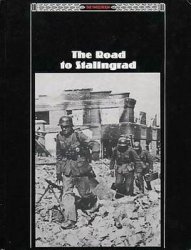Despite the deaths of some of his cavalrymen, in the hours that followed
William ordered charge after bloody charge against the English ranks.
But though they suf ered heavy losses, the brave Saxon infantry held
i rm. French priest and historian William of Poitiers, who personally
knew and served Duke William, later described this stage of the battle.
“Where one side works by constant motion and ceaseless charges,” he
wrote, “the other can but endure passively as it stands i xed to the sod.
h e Norman arrow and sword worked on. In the English ranks the only
movement was the dropping of the dead. h e living stood motionless.”3
Seeing that the cavalry charges alone were not forceful enough to
break the enemy lines, William i nally tried a dif erent strategy. He had
his horsemen pretend to retreat down the hillside. Sure
enough, just as he had hoped, many of the Saxons broke
ranks and chased after the Norman riders. h at left big
gaps in the Saxon lines into which other Norman i ghters
rushed. Eventually, King Harold’s infantry ranks fell
apart, and the onrushing Norman forces approached
him and his personal bodyguards at the hill’s summit.
According to some sources, as these guards met their
deaths around him, he fought on courageously, killing numerous Normans
before an arrow entered one of his eyes and penetrated his brain. (In
recent years, a number of modern scholars have disputed this, saying that
the Saxon monarch may have died in some other manner.)
At this point, according to William of Poitiers, the remaining Saxon
soldiers “realized beyond doubt that they could no longer stand against
the Normans. h ey knew that they were reduced by heavy losses and that
the king himself, with his brothers and many nobles of the realm, had
fallen.” h erefore, they “turned to l ight and made of as soon as they got
the chance.”4




 World History
World History









